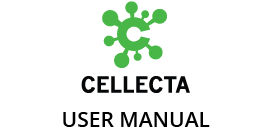To remove non-specific PCR products and other factors that may reduce the efficiency of TA cloning, the amplified barcodes may be purified. This may help ensure that a greater number of clones have the correct barcode for sequencing.
To purify the PCR product, use the QIAquick PCR Purification Kit (QIAGEN) following the manufacturer’s protocol. In the last centrifugation step, centrifuge the spin filter at maximum speed for at least 5 minutes to completely dry the membrane thereby avoiding ethanol contamination in the purified PCR product. Separate the purified PCR products by electrophoresis in a preparative 3.5% agarose-1xTAE gel. Cut out the correctly-sized band and extract DNA from the gel using the QIAquick Gel Purification Kit (QIAGEN) and then proceed with cloning the gel-purified PCR product in the TA cloning vector, based on the manufacturer’s protocol.
- Purify and concentrate the PCR products from each sample using the QIAquick PCR Purification Kit following the manufacturer’s protocol. Samples should be eluted in a volume of approximately 30 µl.
- After purifying and concentrating, run each purified PCR product with 10X loading buffer on a 3.5% agarose-1xTAE gel with well sizes that accommodate at least 50 µl.
- Using a transilluminator and scalpel, excise the narrow band that corresponds to the correct target sgRNA or barcode amplicon size.
Caution! Be sure to use UV safety glasses to protect your eyes when viewing and excising the DNA from the gel on the transilluminator.
- After excision, purify each PCR product from the gel fragment using a QIAquick Gel Extraction Kit following the manufacturer’s protocol. Elute the purified PCR product in 20 µl of elution buffer.
Note: Be sure to centrifuge QIAquick columns at maximum speed for at least 3 minutes before eluting DNA to avoid ethanol contamination in the purified PCR product.
- Quantify extracted DNA in each sample using A260nm OD measurement using NanoDrop® spectrophotometer (or equivalent), and then adjust the concentrations as needed for TA Cloning.
Need more help with this?
Contact Us

